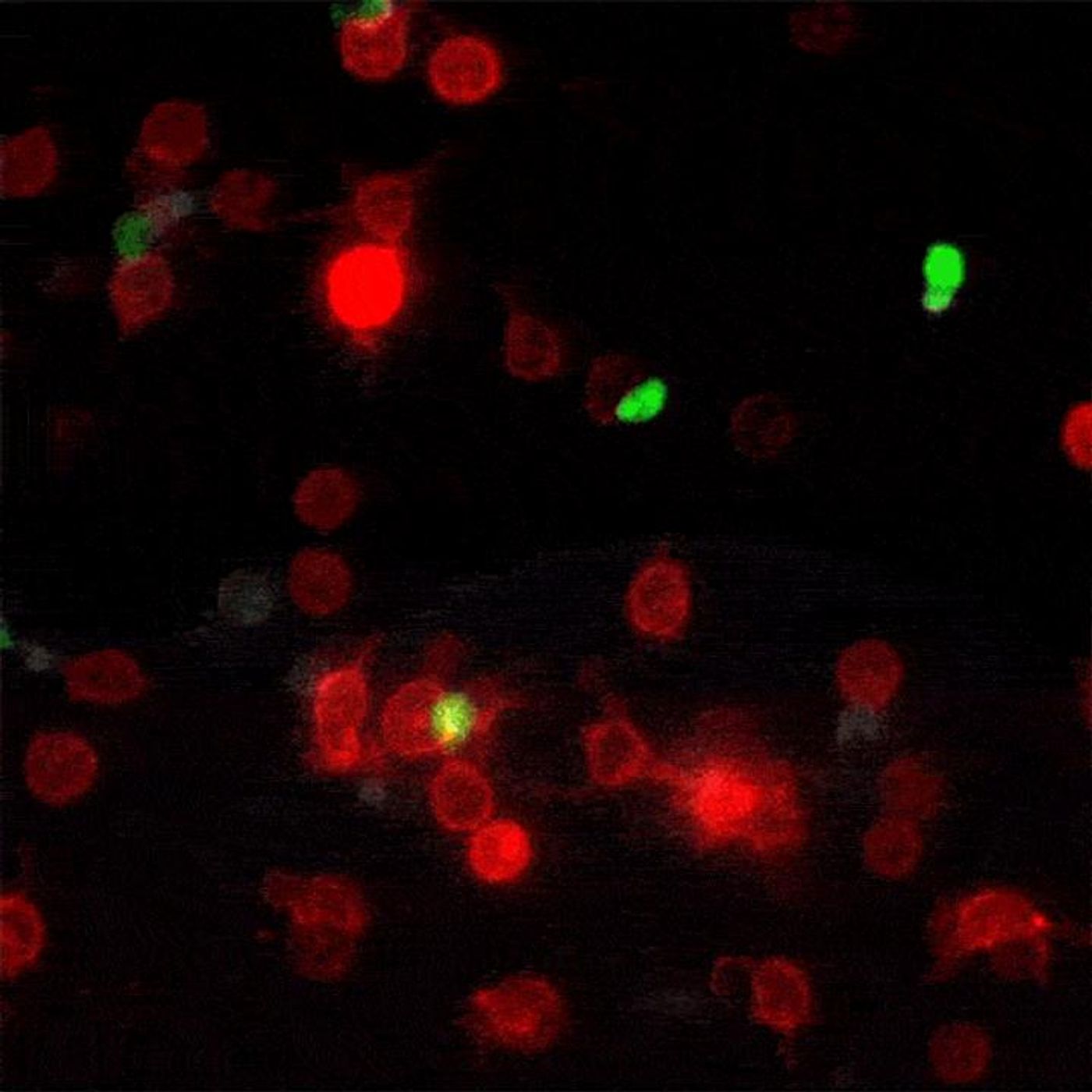Immune Cells Exchange Signals Through "Kiss and Run" Encounters
Scientists are measuring interactions between immune cells that they haven’t been able to quantify before. With this new influx of information, they could learn a lot more about the immune response to infections and autoimmune disease.
From Rockefeller University, scientists are studying what they’re calling “LIPSTIC” or “kiss-and-run” interactions. With a new system of monitoring immune cell communication among immune cells in live mice, scientists can visualize immune cell interaction in real time, whereas before, scientists could only measure this type of interaction via isolated cells grown in the lab.
"Most immune phenomena require that cells physically meet each other and exchange signals so that the response gets kick started,” explained lead scientist Gabriel Victora. “That is how the system decides whether or not it wants to react to a stimulus like an invasion by a pathogen, and if it is going to act, what exactly it should do."
How does a “kiss-and-run” interaction between immune cells work? Individual immune cells interact briefly with another cell within a “crowd” of other immune cells. Researchers, like Victora, want to track these brief moments of communication. So they developed a system for tagging the parts of the immune cell that make physical contact during the interaction. This manipulation would, in theory, result in immune cells “tagging” one another so researchers could measure the interaction, which they successfully did in the lab.
With the new system, Victora and his team could tell which cells within a population were communicating, watching how the immune system reacts on a cellular level to a pathogenic invasion. "We can also monitor how the number and quality of the interacting cells changes over time,” Victora explained.
Victora and his team took their system one step further, testing its efficacy in live mice. They used T cells and dendritic cells, a classic example of cell-to-cell contact in the immune system. Dendritic cells are antigen presenting cells, which means they identify and bind foreign particles, like proteins from bacteria, and present them to T cells. If a T cell deemed the antigen worthy of mounting an immune response, then it would recruit the cells necessary to do so.
To start, researchers produced dendritic cells primed with an antigen that T cells recognize as foreign. They injected mice with the primed dendritic cells, which made their way to the nearest lymph node, which provides a home to a plethora of T cells. Researchers found that the labeled dendritic cells had “tagged” T cells in the lymph node, successfully indicating their ability to measure immune cell interactions.
The present study was published in the journal Nature.
Source: Rockefeller University









